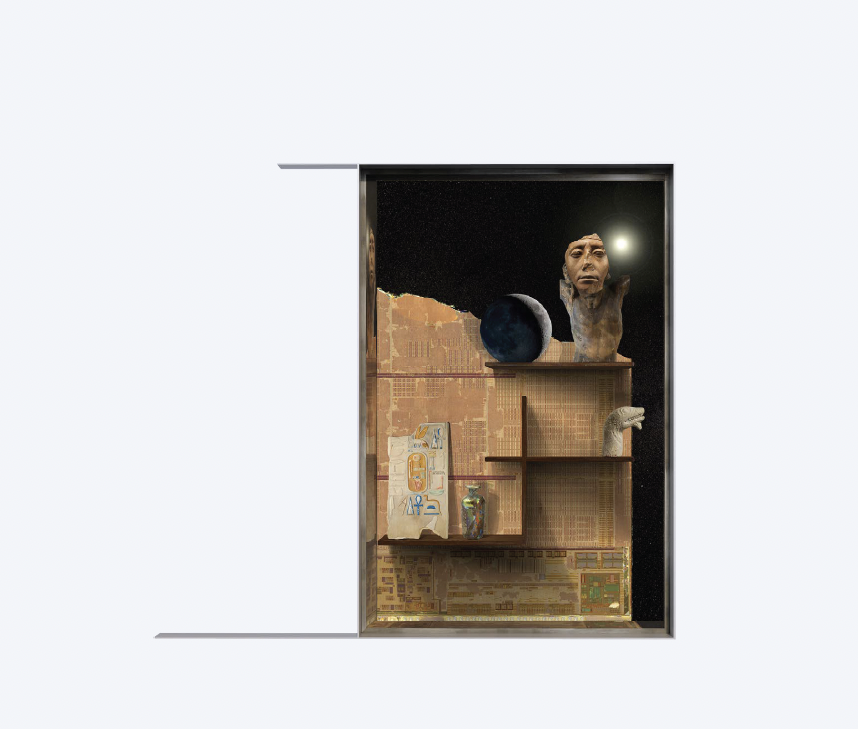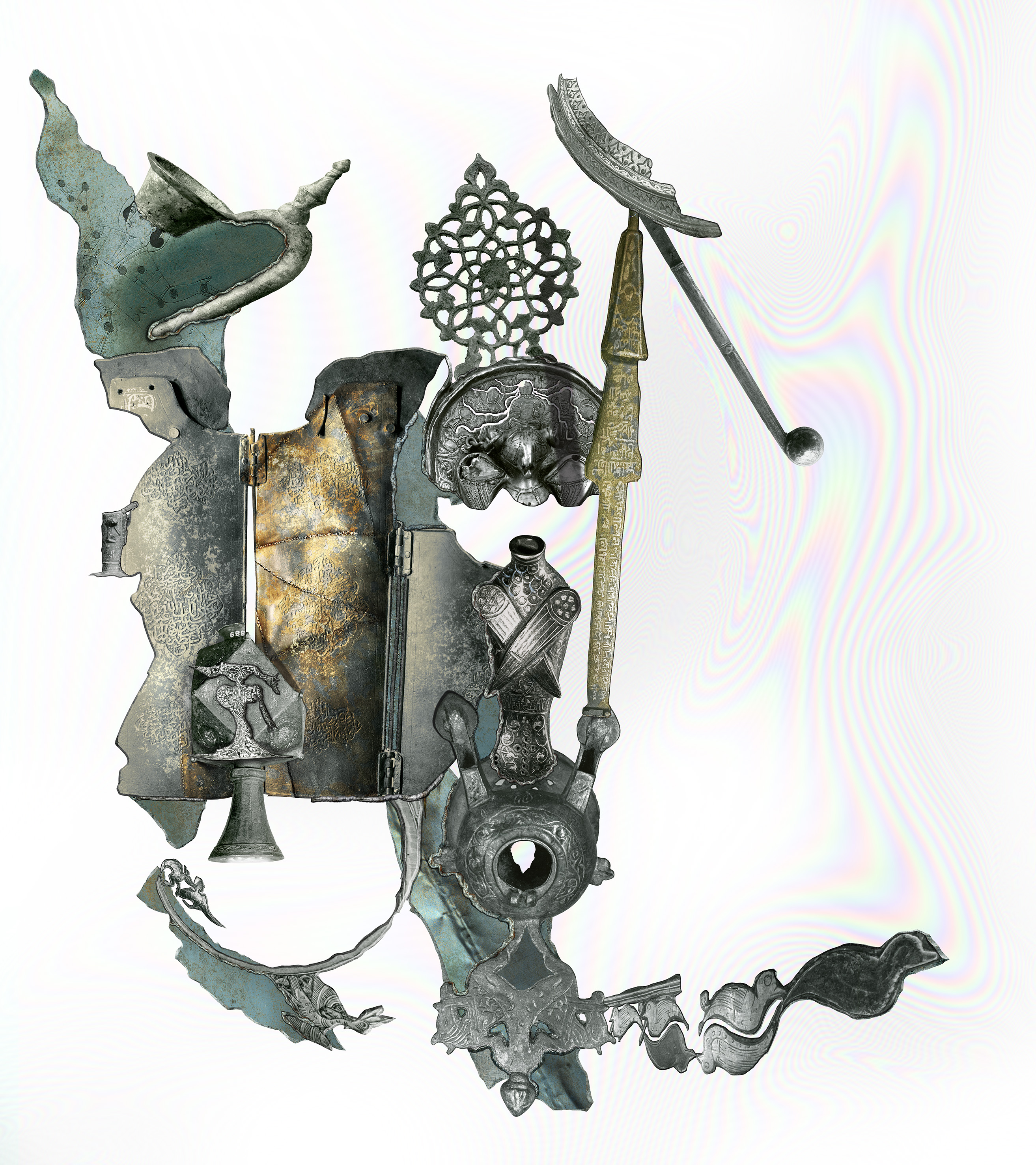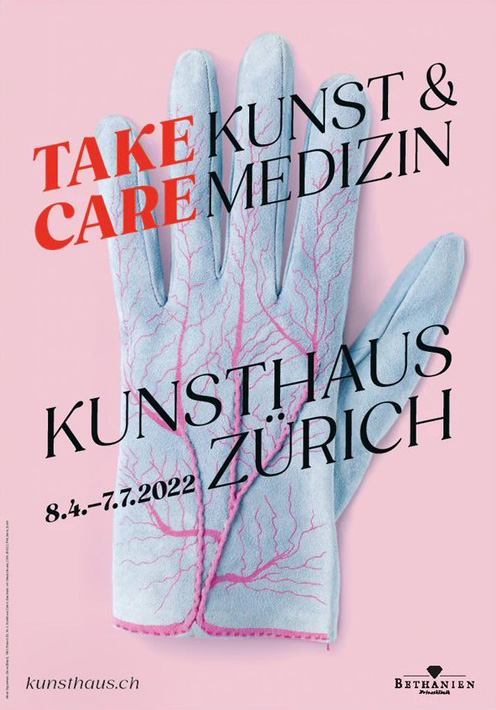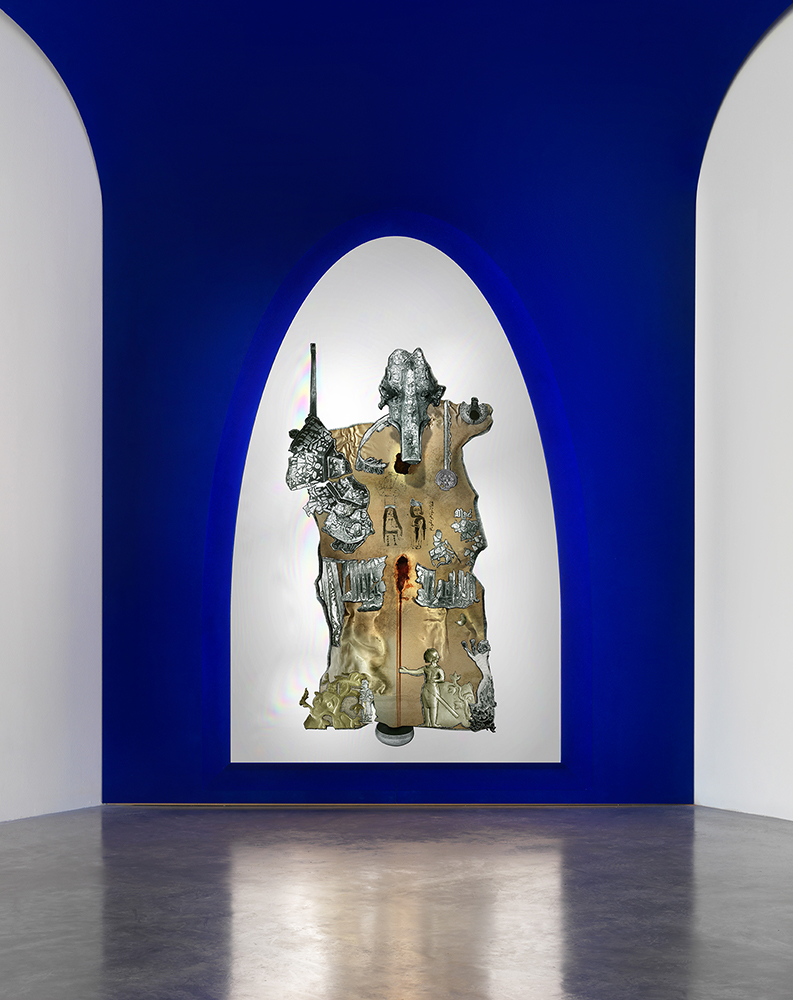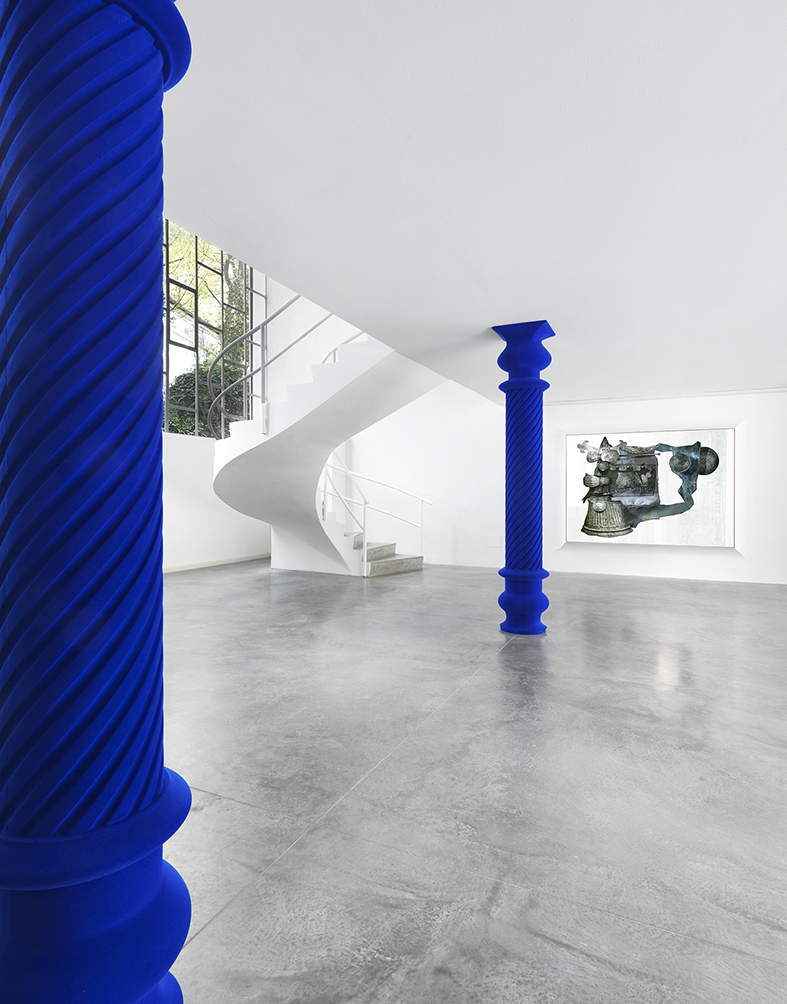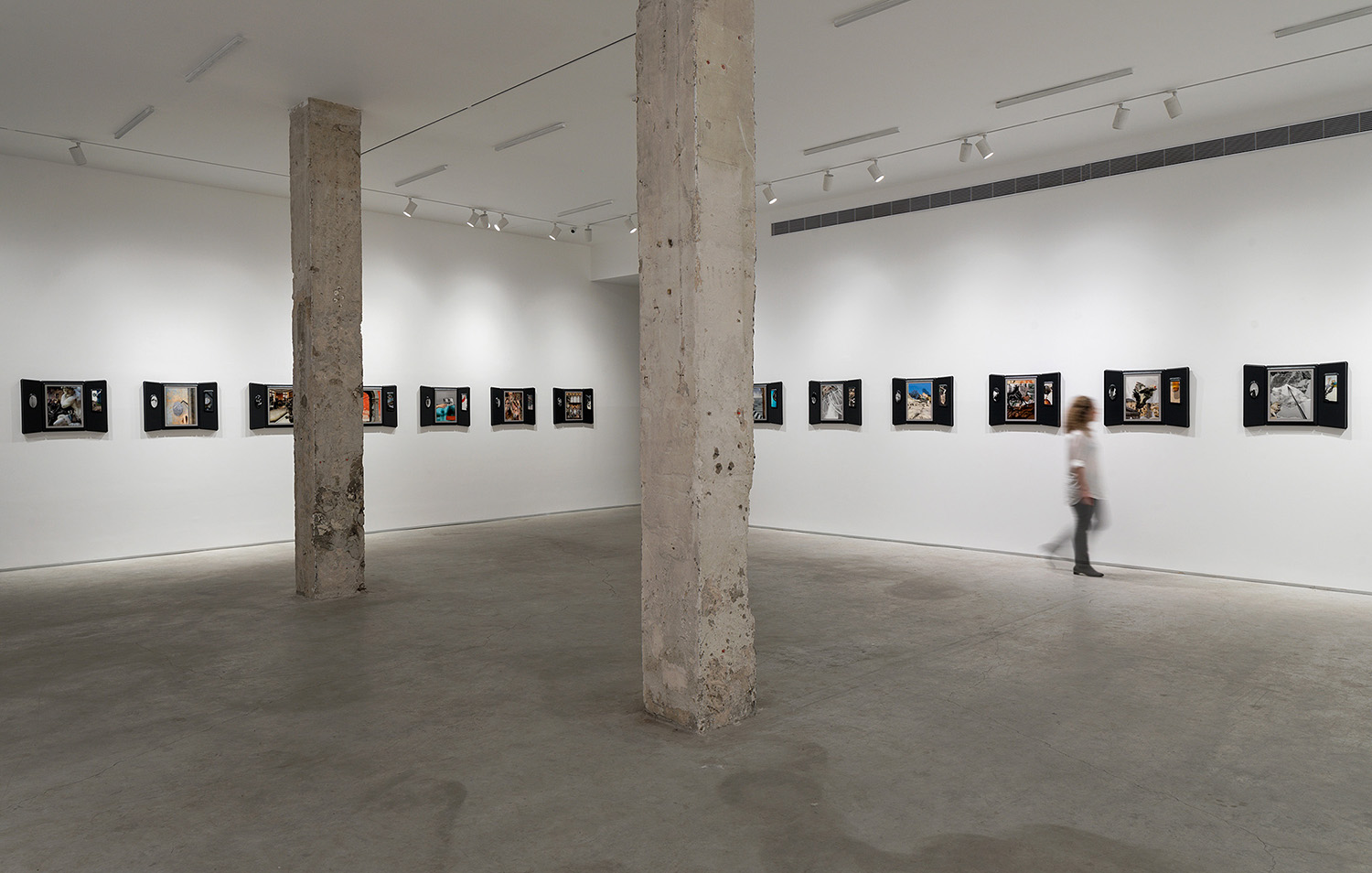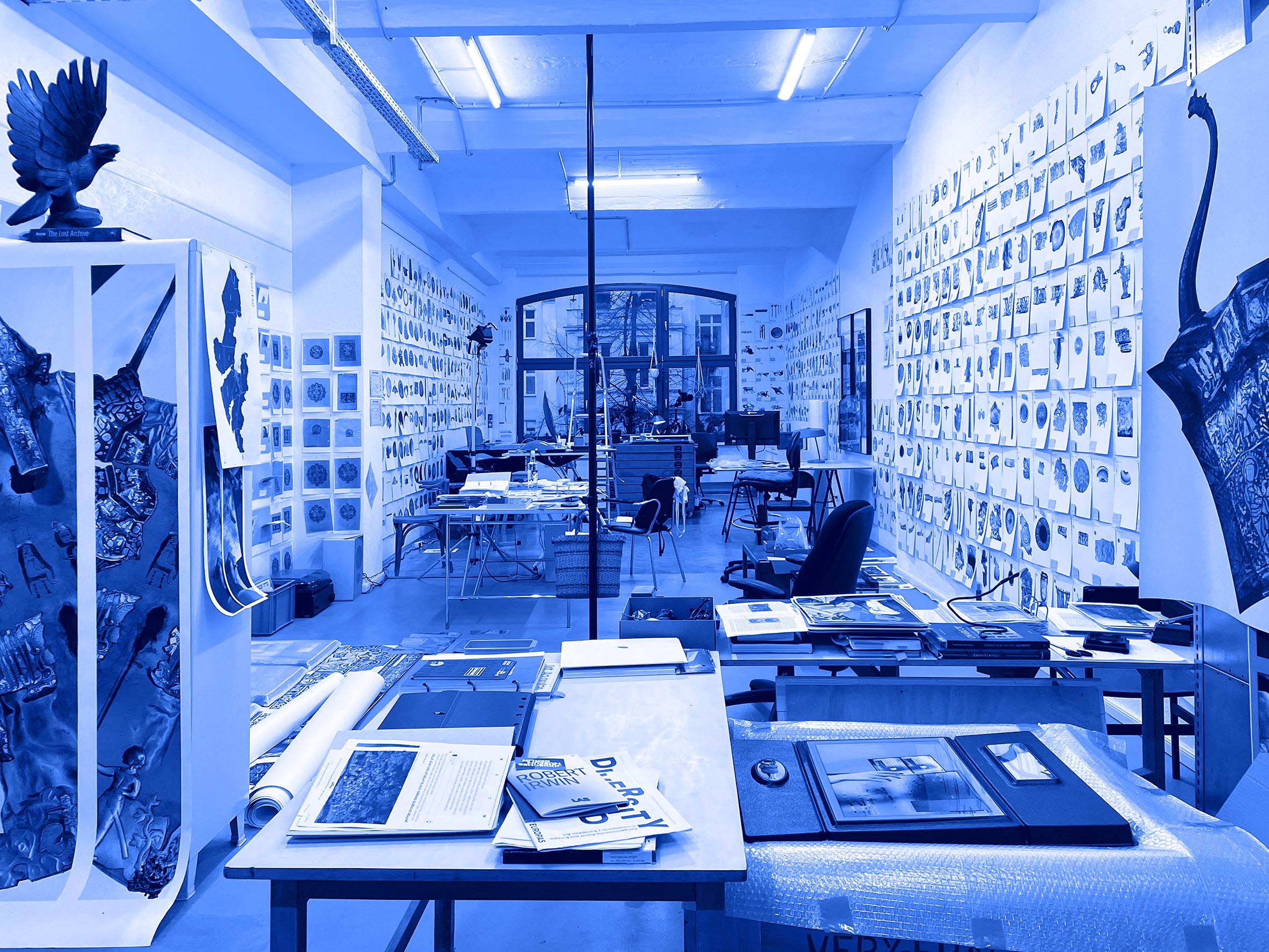
Ilit Azoulay lives and works in Berlin. Her photographic background emerges from research-based scrutiny, engages with archiving and history, and creates alternative perspectives. Her works break down hierarchies of time and space by overlaying multiple realities and explore alternatives to male-dominated or Eurocentric forms of storytelling and knowledge transfer. In doing so, she deconstructs the notion that photography is meant to capture a decisive moment. Incorporating photomontage, sound, and architectural elements, Azoulay examines how visual information travels and is processed culturally, economically, and politically.
Ilit Azoulay’s work has been exhibited extensively and internationally in galleries and museums. In 2022, the artist represented the Israeli Pavilion at the 59th Venice Art Biennale with her project Queendom.
Ilit Azoulay
2024 Mere Things, Jewish Museum New York
2024
Mere Things, Jewish Museum New York
QUEENDOM. Navigating Future Codes, Museum der Moderne, Salzburg
Common Ground, The Israel Museum, Jerusalem
2023
Queendom, Lohaus Sominsky Gallery, Munich
Gedanken Spielen Verstecken, Haus Kunst Mitte, Berlin
European Month of Photography, Berlin
2022
Expanded Visions. Photography and Experimentation, CaixaForum Madrid, Madrid, Spain
Queendom, Israeli Pavilion, 59th Venice Biennale, Venice, Italy
Take Care: Art and Medicine, Kunsthaus Zurich, Zurich, Switzerland
2021
Mousework, Braverman Gallery, Tel Aviv, Israel
Hope – Prix Pictet, Eretz Israel Museum, Tel Aviv, Israel
2020
Skɪz(ə)m, Plato Ostrava, Czech Republic
31: Women, Daimler Art Collection, Berlin, Germany
La Colère de Ludd, New Acquisitions, 40 BPS22 – The Art Museum of Province de Hainaut, Charleroi, France
2019
Regarding Silences, CCA, The Center for Contemporary Art, Tel Aviv, Israel
Transferumbau: Liebling, White City Center, Tel-Aviv, Israel
Transferumbau: Dessau, Bauhaus Museum Dessau, Germany
2018
The Big Picture, Nelson – Atkins Museum of Art, Kansas City, Missouri, USA
Kedem-Kodem-Kadima, CCA – The Center for Contemporary Art, Tel Aviv, Israel
No Place Like home – Museu Coleção Berardo, Lisbon, Portugal
Daegu Photo Biennale 2018 – Daegu, South Korea
Excavation Mark! Reveal Preserve Glorify, Hansen House – Centre for Design, Media and Technology, Jerusalem, Israel
2017
No Thing Dies, The Israel Museum, Jerusalem, Israel
Nebraska: unknown aspects, Braverman Gallery, Tel Aviv
2016
Photography Today: Distant Realities, Pinakothek der Moderne, Munich, Germany
2015
Ocean of Images: New Photography 2015, MoMA, New York, USA
A Seventh Option, Andrea Meislin Gallery, New York, USA
The Biography of Things, The Australian Center for Contemporary Art, Melbourne, Australia
Les Rencontres d’Arles Discovery Award, nominated by Quentin Bajac (MOMA), France
Disorder: Prix Pictet Finalists, Musee d’Art Moderne de la Ville de Paris, France
[7] Places [7] Precarious Fields, Fotofestival Mannheim, Mannheim, Germany
Affinity Atlas, The Frances Young Tang Teaching Museum and Art Gallery at Skidmore College, Saratoga Springs, NY, USA
Re:Start, Braverman Gallery, Tel Aviv, Israel
2014
Implicit Manifestation, Herzliya Museum of Contemporary Art Shifting Degrees of Certainty, KW, Berlin, Germany
Altarations: Built, Blended, Processed, Schmidt Centre Gallery, Florida Atlantic University, Florida, USA
The Double Exposure Project, Shpilman Institute For Photography, Tel Aviv, Israel
2013
Linguistic Turn, Braverman Gallery, Tel Aviv, Israel Room#8, Andrea Meilsin Gallery, New York, USA Collecting Dust in Contemporary Israeli Art, The Israeli Museum, Jerusalem, Israel
2012
Tree For Two One; Public Installtion, Contact Photography Festival, Museum of Canadian Contemporary Art, Toronto Misplaced, Displaced, Replaced, Rotwand Gallery, Zurich, Switzerland Eyes in the back of the head, The Israeli Center for Digital Art, Holon, Israel Private/Corporate VII, The Doron Sebbag Art Collection, Tel Aviv, in collaboration with the Daimler Art Collection, Stuttgart/Berlin
2011
The Keys, Andrea Meislin Gallery, New York, USA The Constantiner Photography Award for an Israeli Artist, Tel Aviv Museum of Art, Tel Aviv, Israel Magic Lantern: Recent Acquisitions in Contemporary Art, The Israel Museum of Art, Jerusalem, Israel The Fabulous Eight Or The Mysteries Of The Enchanted House, 27 Hissin st, Tel Aviv, Israel Numerator and Denominator, Herzliya Museum, Herzliya, Israel
2010
The Keys, Bezalel Academy of Art and Design Gallery, Tel Aviv, Israel New in Photography: Recent Acquisitions, The Israel Museum, Jerusalem, Israel
2008
Art Harvest, Art Farm Residency, Nebraska, USA Findings, Minshar for art Gallery, Tel Aviv; Israel
Awards
2017
Israeli Culture and Sports Ministry Prize Artis Project Grant Outset Project Support
2015
Artis Exhibition Grant
2013
Mifal HaPais Foundation Grant
2011
Israeli Culture and Sports Ministry prize The Constantiner Photography Award for an Israeli Artist, Tel Aviv Museum of Art
Collections
Art Institute Chicago, USA
Centre Pompidou, France
Daimler Art Collection, Germany
Doron Sabag Collection, Israel
Elstein Collection, Israel
Guggenheim Museum, New York, USA
Hainaut Province Collection, France
Hangar Photo Art Center, Belgium
Igal Ahouvi Collection, Israel
Julia Stoschek Collection, Germany
Knesset Israel (the Israeli Parliament) Collection
LACMA, USA
Rivka Saker Collection, USA/Israel
Mandel Collection
MoMA – The Museum of Modern Art, New York, USA
National Gallery of Australia
The Ekard Collection, Netherlands
The Herzliya Museum of Contemporary Art, Israel
The Israel Museum, Jerusalem
The Museum of Fine Arts, Houston, USA
The Tel Aviv Museum of Art, Israel
Tiroche de Leon, Israel
Tony Podesta Art Collection, USA
Yona Fischer Collection, Israel
Ashdod Art Museum – Monart Center, Israel
SIP – The Shpilman Institute for Photography, Israel
